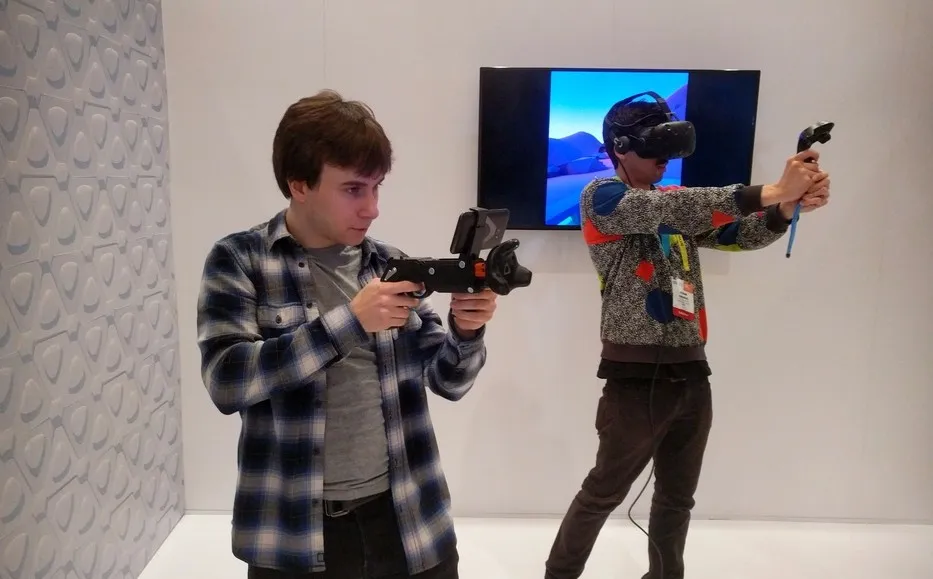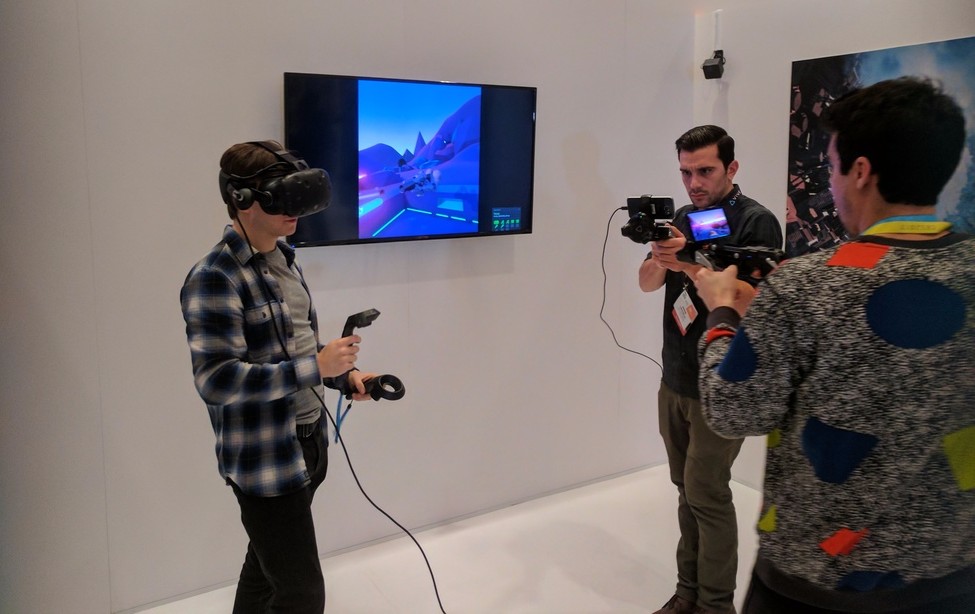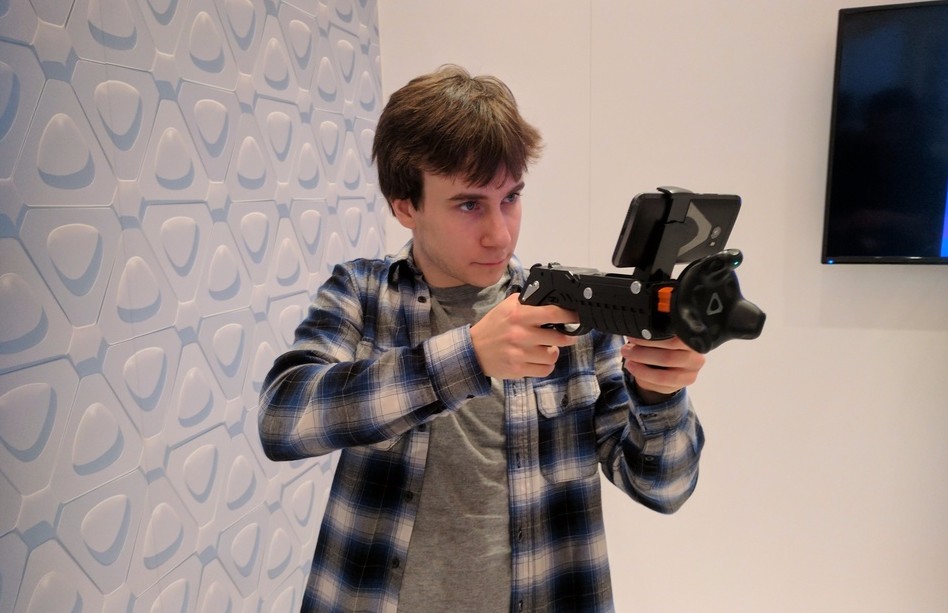Amidst the hustle and bustle of Vive’s CES booth, there’s a war zone. It’s a hellish battlefield in which three brave brothers are making a last stand against a hive mind of silent soldiers, uniformly marching forward. The heroes twist and turn, covering every angle, ducking and weaving out of the line of fire — but it’s hopeless; the enemy never ceases in their conquest.
This memorable struggle I experienced was made possible by an HTC Vive, a couple of smartphones, and a lot of plastic.
The game, or rather the concept, was Master of Shapes‘ Cover Me, a unique take on VR local multiplayer that adapts to the realities of current VR tech. You’re probably not going to have two Vives to play with and, even if you did, you’d walk into each other all the time. But why not take use smartphone and give a second player a window into the game? Better yet, why not attach the phone to the Vive’s new tracker peripheral with a gun and have it appear within VR?
That could be interesting.
Cover Me is in the very, very early stages of development right now, but on a conceptual and mechanical level alone it shows a lot of promise. One player is experiencing the everyday Vive shooter; enemies swarming in from all sides, using your two controllers to blast away at them. If others want to join in on the action, they can grab their smartphone, attach it to a plastic gun peripheral fitted with the tracker, and then use the screen to aim and move about in the world. They’re not seeing the world in VR, but they can interact with your world in a very meaningful way.
What you get is an effective workaround for local multiplayer, or at least a glimpse of it. This demo didn’t have any damage enabled so it was more of a shooting gallery than an action stand-off, but you can see how this concept would quickly take shape into something more exciting. Imagine having to constantly cover each other’s backs (the game’s name came from one of the developers literally yelling “cover me!”), calling out enemy positions with your life on the line, perhaps having to keep out of the way of friendly fire.
“We’d been playing around with the Vive controller a couple of months ago and how it could be used for something other than just a VR tool only,” Creative Director Adam Amaral tells me. They started looking into pairing the controller with a phone, as others have done recently, and then HTC got in touch about its tracker. A few weeks later and here we are with a working prototype.
So it’s not the ultimate immersive experience for those on a smartphone, but it does give them a serious role to play in their friend’s world, and gives them a very similar experience from a mechanical point of view. The Vive user will see bigger versions of the other players’ arms and guns so that they know to keep their distance from them.
But, in Master of Shapes’ eyes, this concept goes far beyond Cover Me. “Our hope is that this is almost like a new ecosystem for maybe the Vive or just mobile gaming in general,” Amaral says. “It’s like a new game dynamic. You now can fully move around but you have a small view port, which is kind of cool, it allows you to do some new things.”
Amaral and co. think the applications extend beyond games too. The maker community, for example, could outline real objects in apps like Tilt Brush by running them over with the phone and tracker, though I can’t help but think of the possibilities this might have for a multiplayer horror game, giving you the chance to create jump scares for friends.
The plan is to release a Unity and Unreal plug-in that allows others to quickly integrate the foundation that Master of Shapes is laying here. The team are even talking to Vive about the possibility of having a phone and tracker paired together being recognized as a SteamVR headset so that almost anyone could access the ecosystem, not just Vive owners, though it would obviously limit some content.
Of course that brings about the big question: could you make a position-tracked mobile VR headset with this tracker? “That was the first thing we thought: Cardboard, Gear VR, everything’s room-scale,” Amaral said, describing it as “fully doable”. He joked that he bought a Gear VR just to make sure no one beat him to the idea.
It might have been a joke, but that certainly seems like a big opportunity for mobile platforms, especially with Viveport Mobile serving as a possible way to sell and highlight position-tracked games. Inside-out tracking is an increasingly closer reality for mobile VR but this could be the most viable workaround for current headsets we’ve yet seen.




























